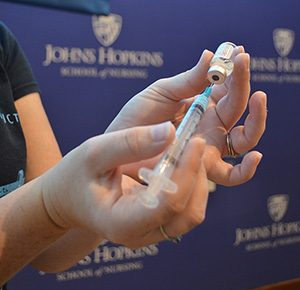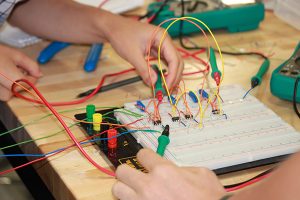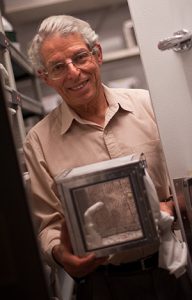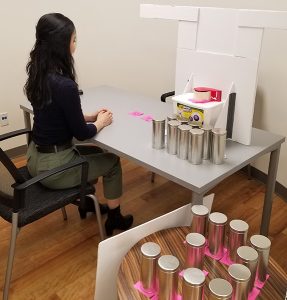 Bus rides in Baltimore for Health Journalism 2019 attendees are offering visits to a clinic focusing on serving sex workers, a design studio bringing biomedical engineering ideas to life and a regenerative medicine lab. They’ll have the chance to practice hands-on administration of Narcan and see firsthand innovative ways to provide health care to the homeless.
Bus rides in Baltimore for Health Journalism 2019 attendees are offering visits to a clinic focusing on serving sex workers, a design studio bringing biomedical engineering ideas to life and a regenerative medicine lab. They’ll have the chance to practice hands-on administration of Narcan and see firsthand innovative ways to provide health care to the homeless.
Those are just some of the offerings of two optional daylong field trips to Johns Hopkins University sites – Bloomberg School of Public Health, School of Nursing, School of Medicine and university labs – plus Baltimore’s Health Care for the Homeless site.

One field trip will stop at the Health Care for the Homeless in downtown Baltimore. Accredited by The Joint Commission and certified by the National Committee on Quality Assurance, this organization serves 10,000 people each year. It is innovative in its approach to health care—providing medical, dental and behavioral care through co-located, integrated teams, while also running supportive housing programs.
Staff and clients will walk you through their largest clinic, and answer questions about the role of social determinants of health in health care provision, as well as the driving forces behind their expansion into housing development.

Next, reporters will come to the Johns Hopkins School of Nursing to practice hands-on administration of Narcan and learn the current state of affairs in harm reduction. They will also get to talk with Meredith Kerr, a doctoral student, who leads Narcan trainings and is a member of the Baltimore Harm Reduction Coalition. From there, the trip will go to the 3,926-square-foot Simulation Center for a look at multiple patient rooms, a control room, and equipment to teach nurses how to respond to cardiac arrest, deliver babies and more. It includes patient manikins that breathe, blink, talk and respond to treatment, with hands-on, state-of-the art scenarios — the same simulation experiences that students use to refine their clinical competence.

Nearby, the trip will include a look at the Carnegie Center for Surgical Innovation, building new tools and optimizing existing ones to improve outcomes and boost patient safety. The center is home to 10 operating rooms fitted with state-of-the-art imaging equipment of all kinds — including surgical tracking systems, mobile “C-arm” X-ray machines and endoscopic video — used for research to optimize protocols and for training future surgeons. Various other laboratories within the center are studying how light can interact with tissues to detect cancers at the earliest stages, developing new ways to navigate through the body using systems akin to GPS, and discovering better protocols to analyze images to glean novel information. Touch 3D-printed models used to practice robotic surgeries, view tissues in a whole new way in the lab’s 7D microscope and see their prototype extremity scanner, which allows imaging of the leg during load bearing.

The next stop will include a display of projects at the Johns Hopkins Translational Tissue Engineering Center. Focused on regenerative medicine, the center is working toward solutions to replace organs and tissues damaged by injury or disease through a cyclic bench-to-bedside-to-bench model that encourages constant innovation. This effort requires a diverse and innovative team made of not only laboratory scientists but also engineers, clinicians and other researchers, including experts and young trainees. Attendees will have the opportunity to see a cheekbone scaffold be 3D-printed before it’s seeded with cells or hold and stretch a real cornea and compare it with artificial corneal tissues currently in development. Hear how the center’s researchers are not only engineering tissues but also the immune system to help avoid transplant rejection.

Another trip begins with a stop at the SPARC Center for Women, one of the nation’s first full-service harm reduction centers focused on serving women engaged in the street economy but open to all women. The center aims to enhance the well-being of women by providing safe and compassionate health, social, legal and drop-in services at no cost. SPARC offers case management and has an extensive outreach program that reaches 80 to 100 women, providing them with harm reduction tools such as safe sex kits, safe drug use kits, water and snacks.

After a short bus ride, the next stop will include a tour of an insectary raising mosquitoes. Johns Hopkins Malaria Research Institute’s director Nobel Laureate Peter Agre, M.D., and facility director Marcelo Jacobs-Lorena, Ph.D., will show journalists the insectary’s walk-in incubator, where at any given time tens of thousands mosquito eggs are being harvested and grown into mosquitos. The researchers will discuss ongoing investigations that seek to identify interactions between the mosquito vector and the human host that could, if disrupted or blocked, one day stop disease transmission.
Also on this tour, researcher Conor McMeniman, Ph.D., will show journalists the insectary’s newest facility, a specialized room equipped with a wind tunnel designed so that researchers can closely study the flight patterns of female mosquitoes towards human-related stimuli including human body odor. McMeniman will discuss his team’s research that seeks to discover insights into the mechanics of the mosquito sense of smell and ways to block it.
During the same stop, reporters will have a chance to visit with Frank Lin, M.D., Ph.D., the director of the Cochlear Center for Hearing and Public Health, and other Cochlear Center researchers, to try out some of the latest over-the-counter hearing technologies, and discuss changes that are coming in the next couple of years.

Researchers at the Cochlear Center works to increase public health understanding of the impact that hearing loss — which is present in nearly 50 percent of adults over 60 — has on the brain, our cognitive abilities and risk of dementia. This research might even reshape how the entire hearing care and consumer technology industry functions and that will allow for disruptive innovations from companies such as Bose and Apple to benefit the 38 million Americans with hearing loss.
At the next bus stop, attendees will hear how the brain perceives sights and smells and get a hands-on demonstration of ongoing work in their labs. At Jason Fischer’s Dynamic Perception Lab, through interactive experiments, people will learn how surprisingly hard it is to identify everyday scents and how critically we depend on our sense of smell.

At this lab, if time allows, people can also see how the brain processes the physics of objects by trying to predict how objects will behave, and they can try a simulation that shows what it’s like to be colorblind. With the Visual Thinking Lab and the Perception & Mind Lab, journalists can participate in an eye tracking experiment to learn how what we see affects attention, memory and cognition.
A short walk away, the trip includes a tour of the Design Studio, a 5,000-square-foot state-of-the-art work space available to biomedical engineering students to brainstorm and bring their ideas to life. Equipped with a drill press, a 3D printer, cell culture materials and much more, the studio boasts every tool necessary for students to design and redesign to perfection. The studio features an open workspace, rapid prototyping lab, wet lab and a machine shop for students to meld the fields of engineering and technology to advance health care delivery across the globe. Attendees will receive a tour of the facility and receive student demonstrations of recent research projects borne out of the studio.




